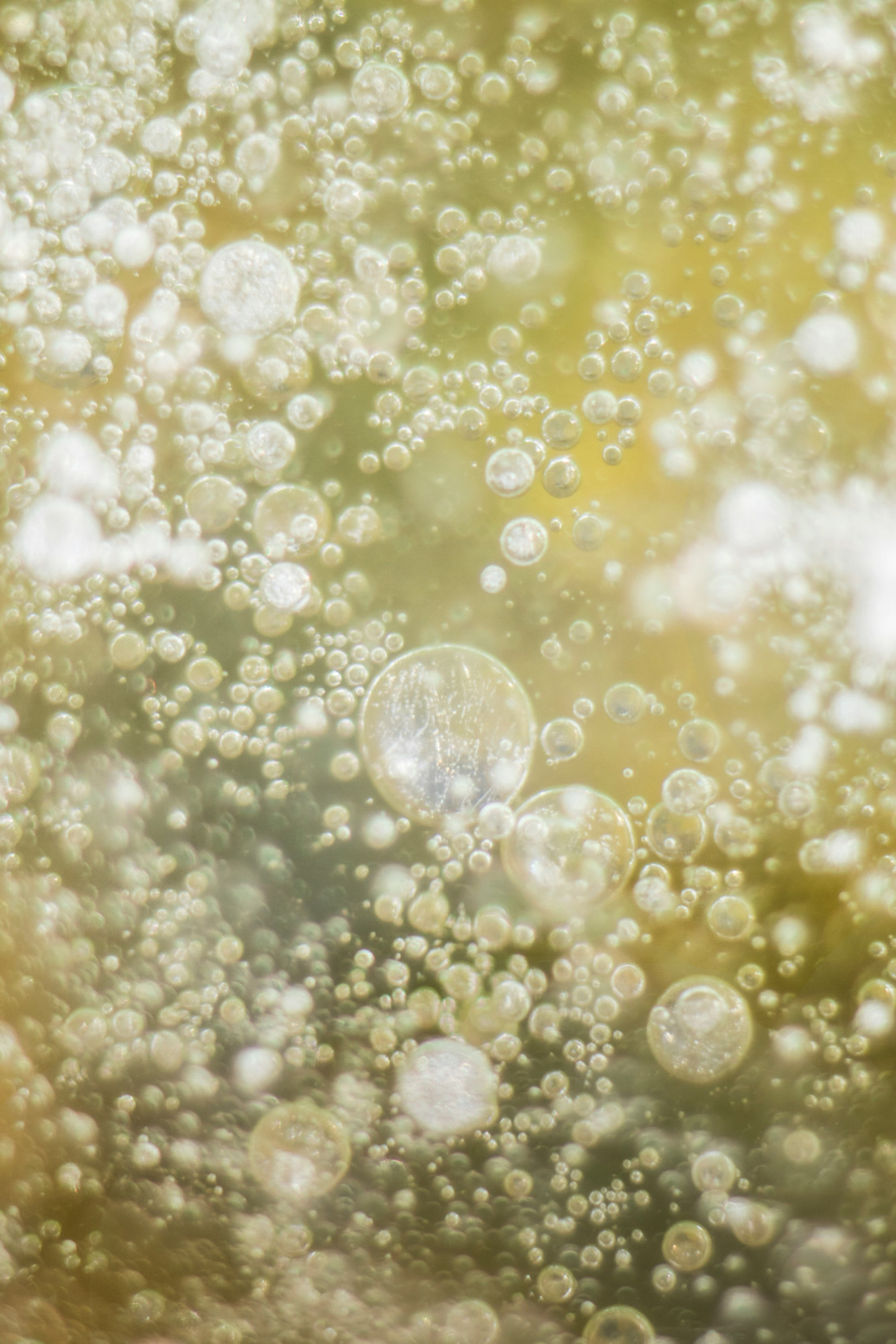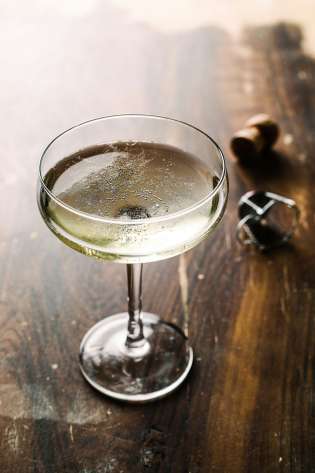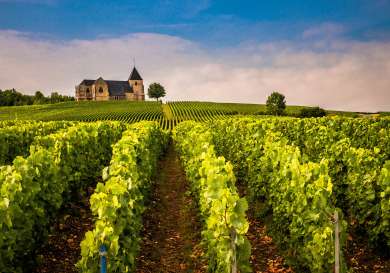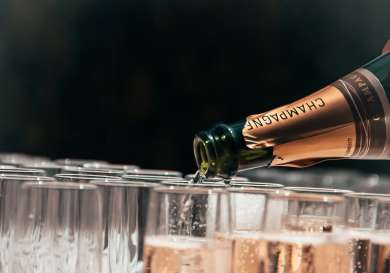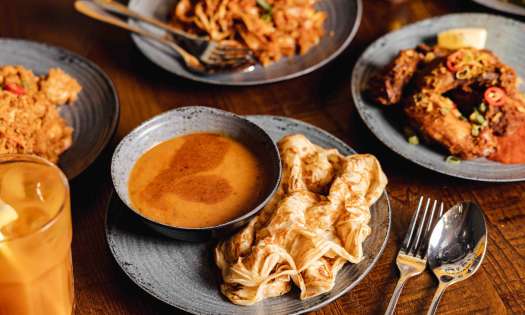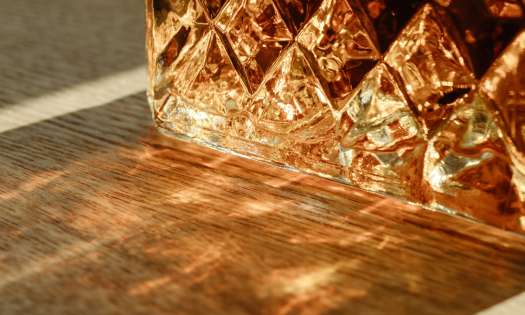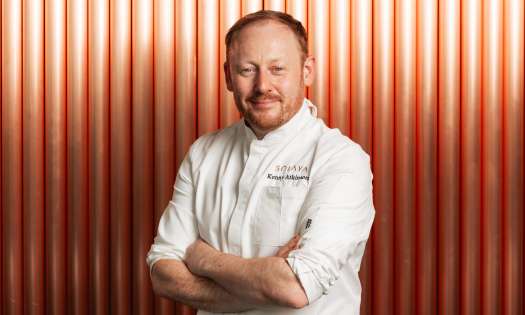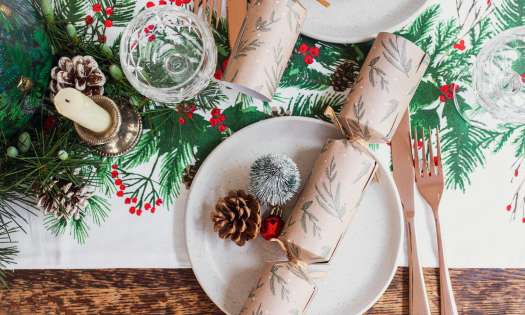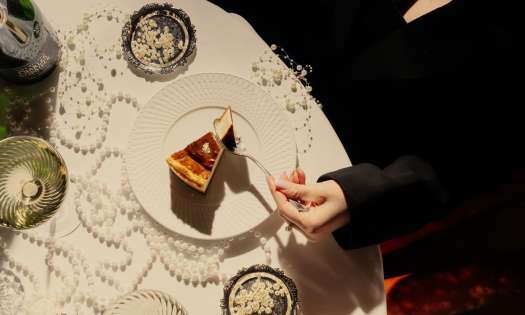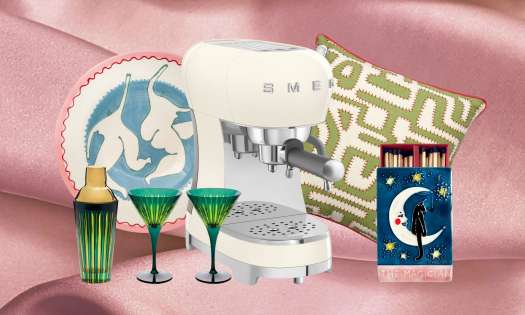Understanding Champagne Production
Champagne is a product of tradition, geography, and strict regulations. By law, only sparkling wines produced in the Champagne region of France can carry the prestigious name. This isn’t just a marketing gimmick—it’s a reflection of the unique conditions that make champagne truly one of a kind.
The region’s cool climate and chalky soils are essential to the wine’s character. The chalk acts like a natural sponge, retaining water during dry periods and providing excellent drainage when it rains. Combined with the cooler weather, these conditions help the grapes maintain their signature acidity and freshness, which are essential for crafting high-quality champagne.
What sets champagne apart from other sparkling wines is the méthode champenoise, or traditional champagne production method. This involves a second fermentation process inside the bottle. During this stage, carbon dioxide is naturally produced, creating those delicate bubbles that define champagne. It’s an intricate process that takes time, patience, and an incredible amount of precision.
The production process is also highly regulated to maintain quality. From the types of grapes allowed to the aging requirements and even how the vines are pruned, every champagne production process step is controlled to ensure each bottle meets the region’s standards. It’s this dedication to excellence that makes champagne synonymous with celebration and luxury.
The Champagne Production Process
Step 1: Harvesting and Crushing the Grapes
It all starts with the grapes—Chardonnay, Pinot Noir, Pinot Meunier, and Pinot Blanc, the holy trinity of champagne production. The harvest is done entirely by hand to ensure that only the best grapes make it into the press. Machine harvesting is a no-go here; bruised grapes can ruin the flavor and integrity of the final product. Timing is also critical—grapes are picked when they have the perfect balance of acidity and sugar.
Red grapes play a crucial role in Champagne production, especially in bottles labeled blanc de noirs, which are produced using red grapes like Pinot Noir and Pinot Meunier.
Once harvested, the grapes are pressed gently to extract the juice without coloring it, even from the darker-skinned Pinot Noir and Pinot Meunier varieties. This ensures the champagne retains its light, golden hue.
Step 2: Primary Fermentation
The freshly pressed grape juice, or must, is then fermented for the first time. Yeast is added to convert sugar into alcohol, creating a dry, still wine. This stage isn’t glamorous—there are no bubbles yet—but it’s foundational. The wine’s base flavors are developed here, and winemakers carefully monitor the fermentation to ensure everything goes smoothly.
After this stage, the wine is clarified to remove any impurities and prepped for the next step: blending.
Step 3: Blending and Secondary Fermentation
Blending is where champagne really starts to take shape. Winemakers combine still white wines from different grape varieties, vineyards, and sometimes even years to achieve a consistent flavor profile. This is especially true for non-vintage champagne, which blends wines from several harvests to maintain a house style. Varietals like Pinot Noir, Pinot Blanc, and Chardonnay play a crucial role in this assemblage. Vintage champagne, on the other hand, uses grapes from a single exceptional year.
Once the blend is perfected, the wine is bottled with a mixture of yeast and sugar, known as the liqueur de tirage. This kicks off the secondary fermentation, which happens right inside the sealed bottle. During this process, carbon dioxide is trapped, creating the signature bubbles. This fermentation can take months or even years, depending on the style of champagne being produced.
Aging and Finishing
Aging
Once the secondary fermentation is complete and the bubbles are locked in, champagne is left to rest and mature. This aging process happens in a cool cellar and can last anywhere from 15 months (the legal minimum for non-vintage champagne) to several years for premium vintages.
During this time, the dead yeast cells, or lees, break down in a process called autolysis. This is what gives champagne its signature flavors of brioche, almond, and toast. The longer the champagne ages, the more complex and refined these flavors become.
Patience is key here. Producers carefully monitor the bottles to ensure the wine develops properly. Aging isn’t just about flavor—it also softens the wine’s texture, making it smooth and velvety on the palate.
Riddling and Disgorging
Once the aging process is complete, there’s one problem left to solve: those yeast cells floating around in the bottle. That’s where riddling comes in.
Riddling is the process of gradually rotating the bottles while angling them downward. This movement encourages the lees to collect in the neck of the bottle. In the past, riddling was done by hand—a slow, painstaking process. Today, most producers use machines called gyropalettes, which perform the same task much faster while maintaining precision.
Once the sediment is gathered in the neck, it’s time for disgorging. The neck of the bottle is frozen, creating a plug of frozen wine that contains the lees. This plug is then removed in one swift motion. This step requires expert timing—done incorrectly, and you could lose too much wine or carbonation.
After disgorging, a small amount of sugar and wine, known as the liqueur d’expédition, is added to adjust the sweetness level. This determines whether the champagne will be brut (dry), demi-sec (semi-sweet), or doux (sweet).
Final Touches
After years of careful crafting, aging, and precision, champagne is almost ready to hit the shelves—or your glass. But there are still a few crucial steps to perfect the final product. During the dosage process, a mixture of white wine, brandy, and sugar, known as liqueur d’expédition, is added to adjust the sweetness of the Champagne. These finishing touches ensure every bottle delivers the right balance of flavor, sweetness, and those iconic bubbles.
The Dosage: Balancing Sweetness
When the disgorging process removes the lees, a small amount of wine is inevitably lost. To replace this, winemakers add a liqueur d’expédition, which is a blend of still wine and sugar. This addition, known as the dosage, plays a significant role in determining the champagne’s flavor profile and sweetness.
The level of sweetness in the dosage dictates how the champagne is labeled. Here’s a quick rundown of common classifications:
Brut Nature: No added sugar; bone-dry champagne.
Extra Brut: Very dry, with minimal sugar.
Brut: The most popular style, dry with a balanced flavor.
Extra Dry: Slightly sweeter than brut, but still relatively dry.
Demi-Sec: Semi-sweet, often enjoyed with desserts.
Doux: The sweetest champagne, almost like a dessert wine.
This tiny adjustment makes a big difference, ensuring the wine is perfectly tailored to its intended style.
Corking and Securing the Bottle
Once the dosage is added, the champagne bottle is ready to be sealed. The iconic mushroom-shaped cork is compressed and inserted into the neck of the bottle. But champagne’s high carbonation levels (thanks to the trapped carbon dioxide) require more than just a cork to stay secure.
A wire cage, known as a muselet, is fastened over the cork to prevent it from popping off under pressure. And that’s not just a precaution—it’s a necessity. The pressure inside a champagne bottle can be as high as 6 atmospheres, roughly the same as the tire of a double-decker bus.
After the cork and cage are secured, the bottle is washed, labeled, and dressed in its final packaging. It’s now ready to make its way to celebrations, dinner tables, or quiet nights in.
Top Champagne Workshops in London
London offers a variety of workshops for champagne enthusiasts, from hands-on experiences to educational tastings. Here are some notable options:
Hands-On Champagne Making Experiences
While traditional champagne production is exclusive to France's Champagne region, London provides immersive experiences that simulate the process:
Le Cordon Bleu London's Champagne Specialist Programme: Developed by the Comité Champagne, this course equips participants with skills in recommending, serving, and purchasing champagne. It includes tastings and practical workshops, culminating in a recognized certification.
London Wine Academy's Official Champagne Specialist Course: Launching in 2024, this program is tailored for both professionals and enthusiasts. It covers interpreting champagne labels, storage, service, and food pairings, with hands-on workshops to apply newly acquired skills.
Pairing Tastings with Champagne Knowledge
For those interested in deepening their understanding of champagne through guided tastings and food pairings, consider the following:
St Pancras by Searcys Champagne School: Offers expert-led masterclasses and guided tastings, perfectly paired with a three-course menu, taking participants on a journey through the world of champagne.
London Wine Academy's Champagne & Sparkling Wine Masterclass: This session explores various sparkling wines, including champagne, and provides insights into production styles, food pairings, and occasions suited for each type.
Le Cordon Bleu London's Fantastic World of Sparkling Wines Masterclass: Participants taste a range of sparkling wines made using different methods, enhancing their understanding and appreciation of these beverages.
Iconic London Locations for Champagne Tastings
Highlights from the St Pancras Champagne School
Searcys Champagne Bar at St Pancras is renowned as Europe's longest champagne bar, offering an extensive selection of champagnes from both established houses and independent producers.
Their Champagne School provides expert-led masterclasses that delve into the nuances of champagne, often paired with a three-course menu to enhance the tasting experience. Each session explores different themes, such as champagnes featured in films or royal selections, catering to both novices and connoisseurs.
For those seeking a more personalized experience, Searcys offers Private Masterclasses. Designed for groups, these sessions provide an in-depth exploration of champagne, guided by expert sommeliers, and can be tailored to specific interests or occasions.
Private Luxury Champagne Experiences
London's luxury scene offers several exclusive champagne experiences:
London Eye Champagne Experience: Elevate your sightseeing with a glass of Pommery Brut Royal Champagne aboard the London Eye. This 30-minute rotation provides stunning 360-degree views of London's skyline, complemented by priority boarding and the option of a private host.
GŎNG Bar at The Shard: Situated on the 52nd floor, GŎNG offers a Luxury Champagne Tasting Experience featuring a selection of Louis Roederer champagnes paired with canapés. Guests can enjoy breathtaking views of the city skyline in an elegant setting.
Wine Cottage: For an intimate experience, Wine Cottage provides Luxury Wine, Champagne & Port Tastings paired with cheese and truffles. These sessions are designed to educate and delight, making them ideal for those looking to deepen their appreciation of fine beverages.
Tips and Resources
If you’re looking to deepen your knowledge about champagne or even explore investment opportunities, there are plenty of resources and experiences to consider. Here’s how you can take your champagne appreciation to the next level:
Visit a Champagne House in France
For an immersive experience, nothing beats visiting a champagne house in the Champagne region of France. Many world-famous producers, such as Moët & Chandon, Veuve Clicquot, and Ruinart, offer guided tours of their cellars.
These tours provide a firsthand look at the production process—from grape selection and fermentation to aging and bottling. You’ll learn about the unique challenges and traditions of champagne making while exploring centuries-old cellars.
Of course, no visit is complete without tastings. These houses often offer flights of their champagnes, allowing you to compare different styles, vintages, and blends. It’s an educational and delicious experience that brings the entire production process to life.
Explore Investment Opportunities in Champagne
For those who see champagne as more than just a celebratory drink, consider its potential as an investment. Platforms like Vinovest make it easy to buy, store, and sell champagne and other fine wines.
Vinovest offers access to a curated selection of investment-grade bottles, including rare and vintage champagnes. They handle storage in professional-grade cellars, ensuring your investment is kept in optimal conditions. Whether you’re a collector or looking to diversify your portfolio, investing in champagne can be both rewarding and profitable.
Online and Local Resources
If a trip to France isn’t on your agenda, there are still plenty of ways to expand your champagne knowledge. The best two ways to do that are:
Online Courses: Platforms like MasterClass and Wine & Spirit Education Trust (WSET) offer in-depth courses on wine and champagne.
Local Tastings: Check out wine shops or event spaces in your area that host champagne-tasting nights. These are a great way to sample different styles without traveling far.
Frequently Asked Questions
What are the basics of making champagne?
Champagne is crafted using the traditional method, which includes:
Harvesting: Handpicking specific grape varieties—Chardonnay, Pinot Noir, and Pinot Meunier—from the Champagne region in France.
Primary Fermentation: Fermenting the grape juice to create a base still wine.
Blending (Assemblage): Combining wines from different grapes, vineyards, or vintages to achieve a consistent flavor profile.
Secondary Fermentation: Bottling the blended wine with added yeast and sugar to induce a second fermentation, producing carbonation.
Aging: Allowing the wine to mature on its lees (dead yeast cells) to develop complexity.
Riddling and Disgorging: Gradually moving sediment to the bottle neck (riddling) and removing it (disgorging).
Dosage and Corking: Adding a mixture of wine and sugar (dosage) to adjust sweetness, then sealing the bottle with a cork and wire cage.
Are there champagne workshops in London?
Yes, London offers several champagne workshops:
Le Cordon Bleu London's Champagne Specialist Programme: A comprehensive course with tastings and workshops, leading to recognized certification.
London Wine Academy's Champagne & Sparkling Wine Masterclass: Explores various sparkling wines, including champagne, with insights into production styles and food pairings.
St Pancras by Searcys Champagne School: Offers expert-led masterclasses and guided tastings, paired with a three-course menu.
How is champagne different from sparkling wine?
All champagne is sparkling wine, but not all sparkling wine is champagne. Key differences include:
Origin: Champagne must come from the Champagne region of France.
Grapes: Only specific grape varieties are used in champagne production.
Production Method: Champagne is made using the traditional method, involving a second fermentation in the bottle.
Other sparkling wines, like Prosecco or Cava, come from different regions and may use different production methods and grape varieties.
What should I wear to a champagne tasting?
Dress codes vary by venue, but smart casual attire is generally appropriate. Avoid strong perfumes or colognes, as they can interfere with the tasting experience.
Can I visit vineyards near London for champagne?
While authentic champagne comes only from France, several English vineyards near London produce quality sparkling wines using traditional methods:
Nyetimber: Located in West Sussex, offers tours and tastings.
Chapel Down: Situated in Kent, provides vineyard experiences and tastings.
These visits offer insights into sparkling wine production and tastings of English sparkling wines.
What is the best time of year to enjoy champagne events in London?
Champagne events occur year-round, but the festive season (November to December) often features more tastings and workshops. Spring and summer also offer events, especially during wine festivals.
How much do champagne workshops in London cost?
Prices vary based on the workshop's length and exclusivity:
Short Masterclasses: Approximately £100-£150 per person.
Comprehensive Courses: Multi-day programs can range from £300-£500.
Private or luxury experiences may have higher fees. It's advisable to check with individual providers for current pricing.
